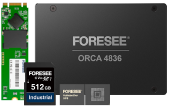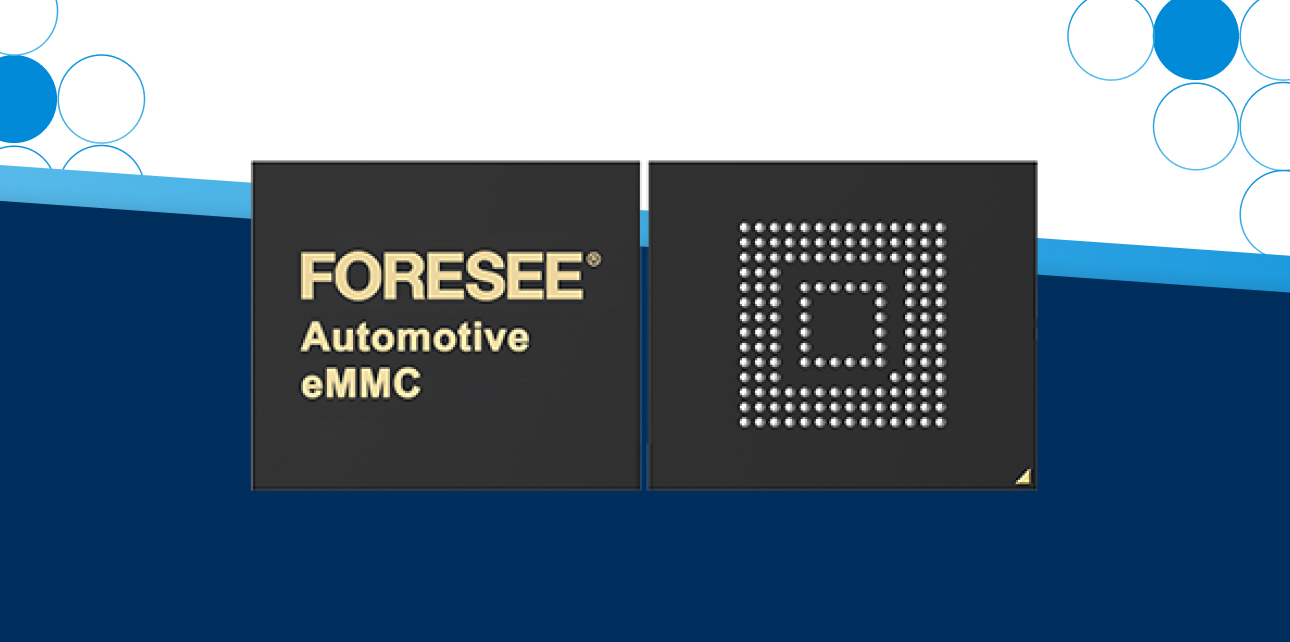Today’s vehicles are marvels of modern engineering, integrating advanced technology to deliver exceptional performance, safety, and connectivity. From autonomous driving systems to infotainment platforms, the automotive industry relies heavily on robust data storage solutions to power these innovations.
Automotive eMMC (embedded MultiMediaCard) has emerged as a cornerstone of this transformation, providing reliable, high-performance storage tailored to vehicles’ unique demands.
Unlike consumer-grade eMMC, automotive eMMC is designed to operate seamlessly in harsh environments, ensuring consistent performance and data integrity over extended periods.
This blog explores the critical role of automotive eMMC in enhancing vehicle performance and reliability, highlighting its features, applications, and why it’s the standard in automotive storage.
What is Automotive eMMC?
Automotive eMMC is a specialized type of embedded storage developed for vehicle use. It integrates NAND flash memory with a controller to provide a compact, durable, and high-speed storage solution capable of meeting the rigorous demands of automotive systems.
Unlike standard eMMCs used in consumer electronics, automotive eMMC is built to withstand extreme conditions such as high temperatures, intense vibrations, and fluctuating power levels. These features make it ideal for automotive applications, where reliability is critical to safety and performance.
One of the defining characteristics of automotive eMMC is its adherence to industry standards like AEC-Q100, ensuring compliance with automotive-grade reliability requirements. Additionally, automotive eMMC is optimized for integration into vehicle systems such as , Infotainment/Navigation , Digital Cluster, Rear-Seat Entertainment, Connectivity (T-box), Accident Recording, and HD Maps, to name a few.
With increasing data demands from connected and autonomous vehicles, automotive eMMC provides the scalability, speed, and endurance needed to support these and other applications. Its robust design and long lifecycle make it indispensable in modern automotive storage architectures.
Key Features of Automotive eMMC
Automotive eMMC stands out due to its ability to deliver exceptional performance and reliability in challenging conditions. Its key features are designed specifically to address the unique needs of automotive environments:
- Reliability in Extreme Conditions: Automotive eMMC operates within a wide temperature range, typically from -40°C to + 105°C, making it suitable for lower and higher temperatures. Its construction also includes resistance to vibration, shock, and electromagnetic interference, ensuring reliable performance across diverse environments and applications .
- High-Performance Storage: With fast read/write speeds and low latency, automotive eMMC supports real-time data processing required for Infotainment, and Connectivity (T-box), Sensor, and Digital Cluster systems. This capability ensures seamless operation even during data-intensive tasks.
- Long Lifecycle: Automotive eMMC incorporates advanced wear-leveling algorithms and error correction codes (ECC), which extend its lifespan by evenly distributing write operations and maintaining data integrity over time.
These features make automotive eMMC a vital component in vehicles, enabling consistent performance and durability in systems where downtime or failure is not an option.
How Automotive eMMC Enhances Vehicle Performance
The integration of automotive eMMC significantly improves a vehicle’s overall functionality by enabling reliable and high-speed data management across critical systems.
- Data Storage for ADAS: Advanced Driver Assistance Systems (ADAS) rely on real-time data from sensors, cameras, and radar to enhance safety and driver experience. Automotive eMMC provides the necessary storage and processing speeds to manage this data without delay.
- Support for Autonomous Driving: Autonomous vehicles require immense computational power to process real-time information, including maps and sensor data. Automotive eMMC ensures reliable storage and fast data access, enabling precise decision-making.
- Infotainment and Connectivity: Automotive eMMC powers infotainment systems, supporting features like navigation, multimedia playback, and over-the-air (OTA) updates. Its high performance ensures smooth user experiences and fast system boot times.
- Diagnostics and Maintenance: Automotive eMMC enables efficient logging of vehicle health data, supporting predictive maintenance and diagnostics. This helps prevent costly breakdowns and improves overall reliability.
With its ability to manage diverse workloads, automotive eMMC enhances both the performance and dependability of modern vehicles.
Design Challenges in Automotive eMMC
Developing automotive eMMC involves overcoming several challenges to ensure consistent performance and reliability in demanding conditions:
- Harsh Environmental Factors: Automotive environments expose storage devices to temperature extremes, high levels of vibration, and electromagnetic interference. Automotive eMMC is engineered to withstand these stressors.
- Long-Term Reliability: Unlike consumer devices, vehicles often require storage solutions that last for years without degradation. Automotive eMMC achieves this through advanced wear-leveling, error correction, and robust NAND flash technology.
- Data Integrity: In critical applications like ADAS or autonomous driving, data errors can lead to safety risks. Automotive eMMC incorporates sophisticated error correction codes (ECC) to maintain data accuracy and prevent corruption.
- Consistency Over Time: Automotive eMMC must maintain consistent performance throughout its lifecycle, even with frequent read/write operations. Manufacturers achieve this through rigorous testing and adherence to strict automotive standards like AEC-Q100.
Addressing these challenges ensures that automotive eMMC delivers the reliability required for modern vehicles.
Innovations in Automotive eMMC Technology
Advances in automotive eMMC technology are driving innovation in-vehicle systems, enabling enhanced performance and functionality.
- Higher Capacities: As vehicles generate and process more data, automotive eMMC has evolved to support larger storage capacities, meeting the needs of applications like autonomous driving and vehicle-to-everything (V2X) communication.
- Enhanced Data Integrity: Modern automotive eMMC employs advanced ECC and bad block management to ensure data accuracy and reliability, even in high-stress conditions.
- Adoption of UFS: While eMMC remains the standard, Universal Flash Storage (UFS) is emerging as a next-generation alternative, offering even faster data transfer speeds and lower power consumption.
- Optimized Power Management: Automotive eMMC now incorporates features that reduce power usage during idle states, improving energy efficiency and aligning with the needs of electric vehicles (EVs).
These innovations ensure that automotive eMMC remains at the forefront of automotive storage technology, supporting the evolving demands of connected and autonomous vehicles.
Applications of Automotive eMMC
Automotive eMMC plays a pivotal role in a variety of vehicle systems, enhancing performance and reliability across multiple applications:
- ADAS and Autonomous Systems: Stores and processes data from sensors, cameras, and lidar systems, enabling real-time decision-making for safe and efficient driving.
- Infotainment and Connectivity: Supports multimedia playback, navigation, and internet connectivity, delivering a seamless in-car experience.
- Electric Vehicles (EVs): Powers battery management systems, enabling precise monitoring and efficient operation.
- Fleet Management: Provides reliable storage for tracking, diagnostics, and predictive maintenance in commercial vehicles.
Automotive eMMC is indispensable in driving the functionality of modern vehicles, from personal cars to commercial fleets.
Why Automotive eMMC is the Industry Standard
Automotive eMMC has become the storage standard for vehicles due to its unmatched reliability, performance, and compliance with industry standards.
- Durability: Designed to withstand harsh conditions, automotive eMMC ensures consistent performance over years of operation.
- Industry Certifications: Meets stringent automotive-grade standards like AEC-Q100, guaranteeing compatibility and reliability.
- Superior Performance: Delivers high-speed data processing and storage capabilities required for modern vehicle systems.
These attributes make automotive eMMC the go-to solution for automotive manufacturers worldwide.
How Automotive eMMC Supports Electric Vehicles (EVs)
Electric vehicles (EVs) represent a transformative shift in the automotive industry, and automotive eMMC plays a critical role in ensuring their performance and reliability. As EVs become more sophisticated, their reliance on efficient, robust storage systems has grown exponentially.
1. Battery Management Systems (BMS):
The heart of any EV is its battery, and effective monitoring is essential to optimize performance and lifespan. Automotive eMMC stores critical data for real-time analysis, including charge levels, temperature, and usage patterns, ensuring the battery operates at peak efficiency.
2. Over-the-Air (OTA) Updates:
EVs frequently require software updates to enhance performance, add new features, and improve security. Automotive eMMC ensures these updates are stored and applied seamlessly, minimizing downtime and disruptions.
3. Autonomous Driving Systems:
Many EVs integrate semi-autonomous or fully autonomous features. Automotive eMMC supports these systems by providing the storage necessary for high-resolution sensor data, navigation maps, and real-time processing.
4. Vehicle Connectivity:
From infotainment to telematics, EVs rely heavily on connected systems. Automotive eMMC ensures fast, reliable storage for connectivity features that keep drivers informed and entertained.
The ability of automotive eMMC to meet the unique demands of EVs makes it a cornerstone of this rapidly growing sector.
Automotive eMMC vs. Other Storage Solutions
When it comes to embedded storage in vehicles, automotive eMMC stands out as the industry standard. Comparing it to other storage solutions highlights why it’s the preferred choice.
1. Automotive eMMC vs. SD Cards:
- Automotive eMMC: Designed for permanent installation, offering higher durability, better data integrity, and longer lifespans.
- SD Cards: Portable but less reliable in harsh automotive environments due to lower endurance and susceptibility to vibration and temperature extremes.
2. Automotive eMMC vs. HDDs:
- Automotive eMMC: Solid-state design with no moving parts, making it resistant to shock and vibration. Operates reliably in extreme temperatures.
- HDDs: Mechanical components are prone to failure under vibration and environmental stress, and they consume more power.
3. Automotive eMMC vs. UFS (Universal Flash Storage):
- Automotive eMMC: Well-established with a balance of performance, durability, and cost-effectiveness.
- UFS: Emerging as a next-gen solution offering faster speeds but at a higher cost, making it suitable for premium applications.
While alternatives have their niches, automotive eMMC’s proven reliability and affordability make it the preferred choice for most vehicle systems.
The Lexar Edge in Automotive eMMC
Lexar offers cutting-edge automotive eMMC solutions tailored for vehicles’ unique demands. With advanced NAND flash technology, robust design, and compliance with industry standards, Lexar ensures reliable performance in all conditions.
Key Features of Lexar Automotive eMMC:
- Enhanced durability for extreme environments.
- Scalable storage capacities to support data-heavy applications.
- Comprehensive testing to guarantee quality and reliability.
By choosing Lexar, automotive manufacturers gain access to storage solutions that empower next-generation vehicle technologies.
Driving the Future with Lexar Automotive eMMC
As vehicles evolve into complex, data-driven systems, automotive eMMC plays a critical role in ensuring performance and reliability. With its durability, high performance, and ability to meet the demands of modern vehicles, automotive eMMC is paving the way for innovation in the automotive industry.
Lexar’s automotive eMMC solutions provide the reliability and performance needed to excel in even the most challenging environments. Visit our embedded storage products to explore how their automotive eMMC products can enhance your vehicle systems and drive your business forward.




